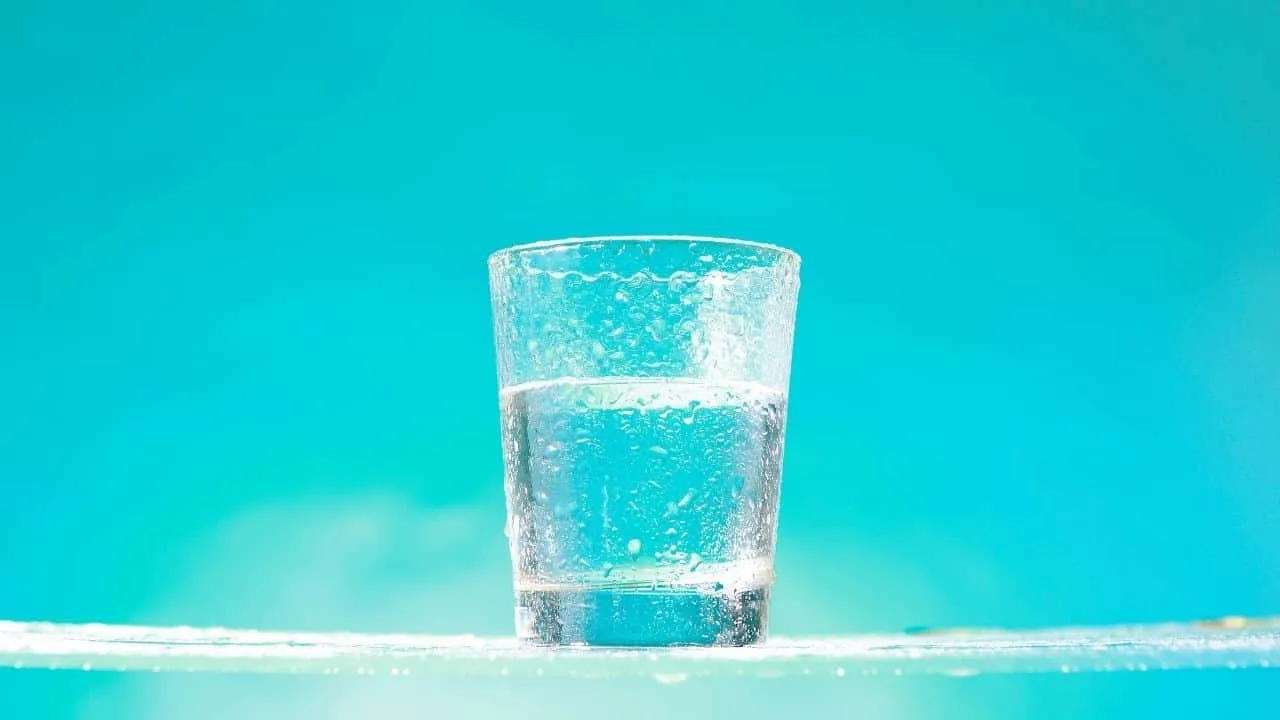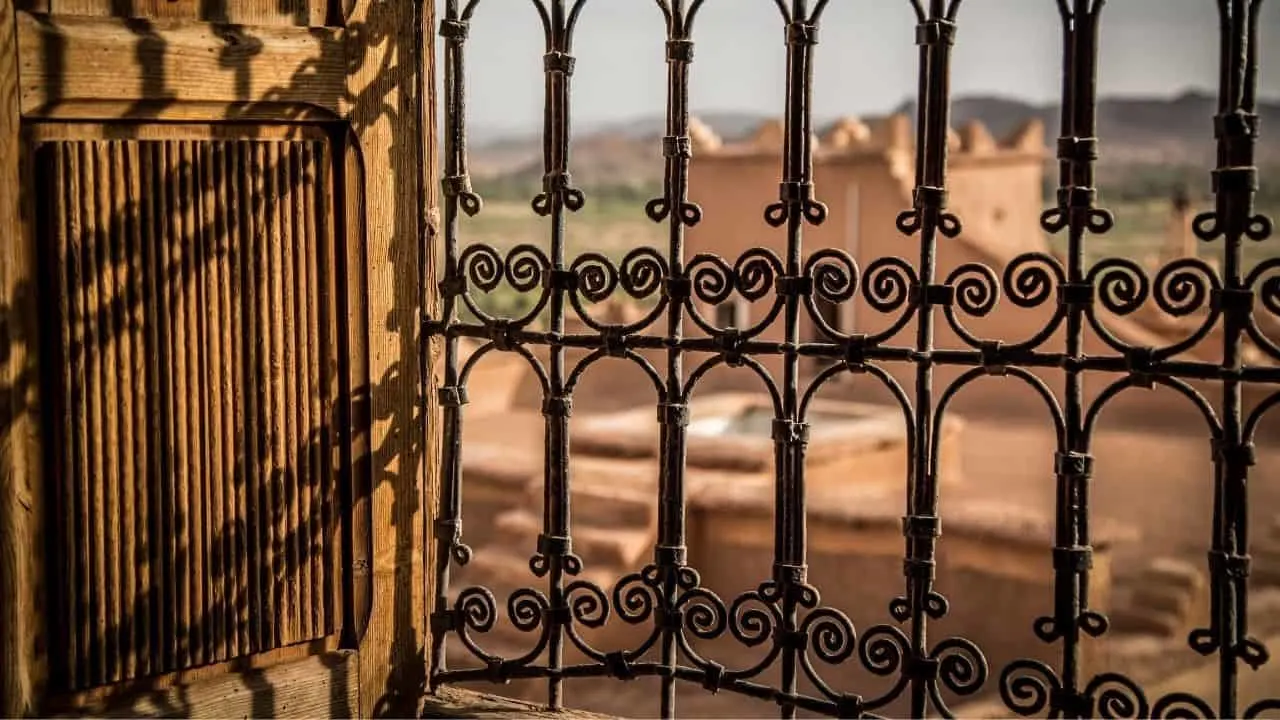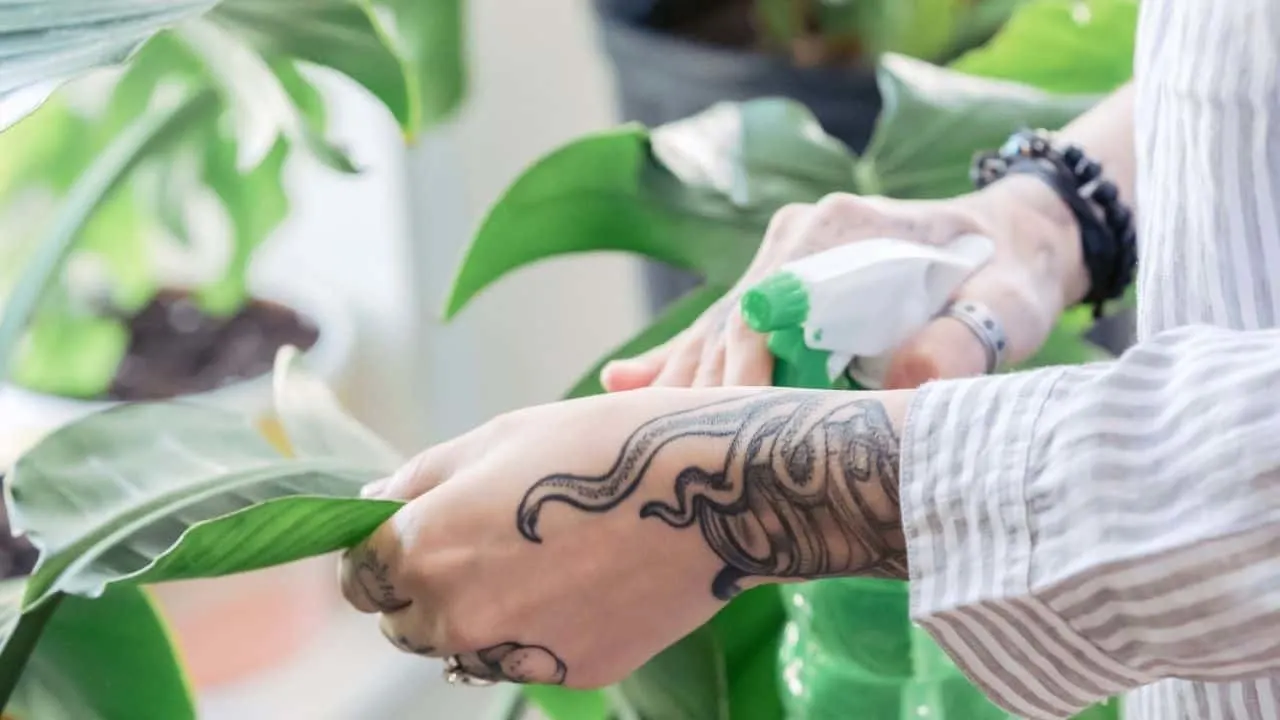The Philodendron Rio or Philodendron hederacerum ‘Rio’ to be correct, is a simple to care for houseplant with a unique appeal.
It has pointy leaves and dense foliage with prominent cream/yellow colored stripes in the middle, but what makes it so special, in my opinion, is how easy it is to grow, maintain and store.
The Philodendron Rio originated from the city of Rio in Brazil. They are believed to have occurred naturally from the Philodendron Brazil plants.
Another Philodendron hederacerum from South America is the Philodendron Brasil.
A Rio has glossy green leaves with cream color stripes, and they offer rich foliage along with vines. They blossom throughout the year and are great house plants.
They do not require much attention but are sensitive to direct light, dryness, and low humidity.
While it’s a gorgeous piece to keep at home, it has toxic chemicals in its saps that can be dangerous to pets and toddlers, but that doesn’t take away the benefits that come with it.
Like many other plants, the Philodendron Rio helps decrease stress as greenery induces feelings of happiness and helps cope with emotions. Plus, they purify the air while adding oxygen to it.
Along with the above advantages, the plant is a long-term companion, making it great for beginners and passionate gardeners alike.
Table of Contents
Philodendron Rio Care
To grow a Philodendron Rio provide a temperature ranging between 60-81 degrees Fahrenheit (16 to 27 degrees Celsius). It needs well-drained soil, a moist and humid atmosphere, plus bright indirect sunlight. Use soil with a pH range of 5.5 to 6 and water with 0.8 cups of water every 9 days on average. 50-60% humidity is sufficient. Fertilize every 6-8 weeks in Summer and Spring and refrain from fertilizing in winter and autumn.
Philodendron Rio Care Guide
Below are some essential plant care factors that you should know.
Based on your location, the weather in your area, and the time of the year, the following steps can vary a bit, so make sure to keep your unique conditions in mind.
1. Soil
The Philodendron Rio grows well in well-drained soil, and you do not need to add fertilizers till the repotting phase, making it an excellent option for people looking for a plant that doesn’t require too much attention.
The plant grows well in acidic soil. The pH level should range from 5.5 to 6.
You will need to make sure the soil is moist (not wet) and not dry as it can cause yellowing of the leaves. Keep the soil hydrated but avoid overwatering as well.
Another thing you should understand is to keep the soil moist consistently. If it’s too dry at one point and too wet at another time, the leaves can get damaged.
2. Water
The Philodendron Rio should be watered when the soil appears dry. While inspecting your plant, make sure the soil is dry to an inch before watering.
The plant usually requires about 0.8 cups of water every 9 days.

Cup of Water for Philodendron Rio
By touching the soil, one can check if it requires water. If it feels dry, water it.
Water the top layer of the soil and allow the water to drain from the pot into the saucer at the bottom but make sure to drain the water as the plant shouldn’t stay in standing water.
Make sure your plant is watered each time thoroughly as it is a water-loving plant and requires a lot of hydration to stay healthy.
If you have a very small space and your plant is directly exposed to light, then make sure to water it after 7 days and add 0.9 cups of water each time.
3. Light
The Philodendron Rio is a shy plant that thrives in indirect but bright sunlight. Make sure to limit its exposure to sunlight, but don’t keep it too far from it as it does need bright light to nurture.
Depending upon its location, if it is more exposed to direct sunlight, it will require more water to stay healthy.
Ideally, keep it 6 feet or 2 meters away from a window and place it near a south-facing window. You will need to balance light exposure as direct exposure and low light can both damage the plant.

South-facing window with a distance works best for Philodendron Rio
Direct sunlight for too long can burn the leaves of your beloved plant, and extremely low light can turn it yellow.
4.Temperature
The plant requires a temperature ranging from 60-81 Fahrenheit or 16 to 27 Celsius.
If the temp reading falls below that range, it can cause frostbites.
5. Humidity
Philodendrons require humid conditions. They need 50-60% humidity.
In the winter season, humidity decreases; therefore, keep the plant under humid conditions by spraying on its leaves.

Spraying leaves can also benefit a Philodendron Rio but is not needed and you need to make sure the leaves drain fast
If the plant leaves are becoming brown from the ends or are turning yellow, that shows that the humidity in your area is not enough.
6. Fertilizer
Use fertilizer for your Philodendron Rio every 6-8 weeks in Spring and Summer. Do not fertilize in Autumn and Winter.
The plant isn’t very high maintenance about the nutrients in the soil. When you get your plant from a store, the potting soil mostly comes with sufficient nutrients.
Because of that, by the time it grows to a larger size, it’s time to change the pot.
7. Repotting
The Philodendron Rio can be potted in a 5-inch pot. When it grows to a double size or when a year passes by, you can change the pot and add your plant to a bigger pot more suited to it.
If the roots come out of the pot’s bottom, then it’s a sign that you should start repotting. Use potting soil as you repot it.
The ideal time for repotting can be the spring season.
8. Pruning
If you want your plant to be bushy and small, you can cut it back. That process is called pruning.
When you cut the steps short, it doesn’t grow into long vines. If you want the long vines, though, you can skip this step.
I personally love this plant because you can keep it in whatever shape that suits you. Whether you want long vines on your walls or bushy plants on the rack, you can do both with this versatile option.
To start pruning, you should pick a length you like but avoid cutting too short to allow the plant to revive through photosynthesis. If it’s too short, there won’t be enough leaves to make food for the plant.
Cut near the nodes so you can use them to propagate new plants if needed.
9. Propagation
Propagation for this plant is quite simple which you can do with the following steps:
- Take a sharp pair of scissors
- Cut the plant stems near the nodes while ensuring there are leaves on it
- You can take either a longer or smaller piece
- Once you have a few pieces, cut their bottom leaves to expose roots from the nodes
- Do not cut all the leaves as they help the plant to grow in the new soil
- You can cut excess stem lengths as the growth will only start from the nodes
- Stick the nodes with the exposed roots directly in water or in a soil-filled pot
- Do not place two thick stems together as in case you want to separate them; the roots can get damaged
The Philodendron Rio reacts well to the propagation and grows fast.
10. Blooms
The plant has small flowers with cream or yellow colored stripes in the middle.
They bloom multiple times a year, so this plant can be very rewarding for those who can’t wait for results.
The plant has glossy leaves and is very pretty to look at without much care involved.
11. Growth
The Philodendron Rio grows to double its size in about a year. It can grow to about 12 inches tall, and then you can place it in a larger pot. As it grows, you will see leaf shedding with time.
Philodendron Rio can reach a max height of 30 inches. You can prune it down if needed.
The plant grows quickly, and as it does, it sheds its old leaves and grows new ones. The older leaves can turn yellow and can be seen at the bottom.
The yellowing is natural and so, you won’t need to fret over it.
View this post on Instagram
Common Problems with the Philodendron Rio
Below are some problems that you can run into if you own a Philodendron Rio.
Yellowing
A very common problem you can face with the Philodendron Rio is that the leaves turn yellow due to low moisture and humidity.
It can also occur if the watering isn’t consistently done and the soil is too dry or too wet at times. Another reason can be low sunlight exposure.
Leaves Turning Brown
If you observe that the plant leaves turn brown from the ends, it means the plant is exposed to light.
Direct sunlight for too long can be the reason for it, as the plant likes indirect exposure.
Droopy or Curled up Leaves
Due to low temperatures, the plant’s leaves can become droopy and can curl up from the ends.
That happens because, just like humans, plants also get frostbites, which is fascinating about the Rio plant.
Pests
If your plant isn’t getting the care it wants, it becomes an easier target to pests.
If it’s over or under watered, exposed to too much or very low light, isn’t placed in humid conditions, then it can become a place for insects to thrive.
They do not get attacked easily by pests, so your plant will remain safe from pests if you are careful.
Toxic Leaves
If you own pets or have children at home, this houseplant isn’t a good option. The plant has toxic chemicals in its saps, and therefore keeping such a plant, even if you are careful, can be a risk.
I strongly recommend that you avoid having the plant if there are young children at home.
Tips for Growing Philodendron Rio
- Keep the soil well-drained and moist.
- Avoid direct exposure to light and if it does occur, make sure to water the plant more frequently than usual.
- Water the plant thoroughly till the bottom saucer is filled and then remove it from the saucer.
- Keep the plant under humid conditions and if needed, spray it with water
- Water consistently to avoid the soil from getting extremely dry but don’t overwater
- Keep it at a distance from the window to provide indirect sunlight
- Repot it as it grows double in size
- If you see slow growth, an excellent and simple home remedy can be the use of coffee beans. You can place the beans in the soil or use a bit of coffee and pour it into the soil.
Is Philodendron Rio the same as Silver Stripe?
Silver Stripe is not the same as Philodendron Rio. Philodendron Silver Stripe has a much darker green colour although both the Silver Stripe and the Rio have green with cream yellow and silver at the center of the leaf. The Silver Stripe has a silvery-white Stripe across the center of the leaf.
How do you identify a Philodendron Rio?
The Philodendron Rio has light green almost silvery pointly foliage and a creamy-yellow colored stripe in the middle of its leaves. It is a vining Philodendron and occured from a natural mutation of the Philodendron Brasil.
What is the difference between Philodendron Brazil and Rio?
The Philodendron Rio is a mutation of the Philodendron Brazil. It has creamy-yellow stripe in the middle of its more elongated leaves and green foliage. The Philodendron Brazil has limy-green color in the middle of the leaf and is even more heart-shaped and compact.
Is Philodendron Rio the same as cream splash?
The Cream Splash is not the same as the Philodendron Rio. The Philodendron Rio has light green – dark green, lime and cream splash along the center of its leaves. The cream splash has naturally mutated in the wild from the Philodendron Rio but has a more intense lime-green splash and darker green foliage compare to the Rio.
Is Philodendron Cream Splash the same as Silver Stripe?
The distinction between Cream Splash and Silver Stripe is difficult as both plants look almost identical. The Silver Stripe has a more dark green leaf color and a cream to light green pattern that is sometimes white. The main difference is the more prominent cream splash of the Philodendron Cream Splash.
Frequently Asked Questions About Philodendron Rio
What should I do in case the leaves become leggy?
Leggy leaves appear due to low light conditions. You can solve the issue by placing it closer to a window but not under direct sunlight.
How long does a Philodendron Rio live?
The plant can live for decades if you take care of it. Therefore the amount of care you provide will determine how long the plant survives.
Is a Philodendron Brazil and a Philodendron Rio the same?
Both are different plants, and the Rio plant is believed to originate from the Philodendron, Brazil.
Do Philodendron Rio show consistent patterns over time?
Unlike plants like Gabby, the Rio plant shows similar patterns on leaves for years to come. That helps in keeping the beauty of the plant in place for long.
Is Philodendron Rio expensive?
The plant’s location, demand, and scarcity make it costly, but there are more expensive Philodendron varieties out there.
Conclusion About Philodendron Rio Care
To care for Philodendron Rio provide bright indirect light, temperatures between 60-81°F (16-27°C). A humudity of 50% or more is optimal. Water once the top 2-3 inches of soil are dry (5-7.5cm) about once every 9 days. Fertilize every two months in spring and summer and refrain from fertilizing in autumn or winter or reduce to every 3 months.

Daniel has been a plant enthusiast for over 20 years. He owns hundreds of houseplants and prepares for the chili growing seasons yearly with great anticipation. His favorite plants are plant species in the Araceae family, such as Monstera, Philodendron, and Anthurium. He also loves gardening and is growing hot peppers, tomatoes, and many more vegetables.


